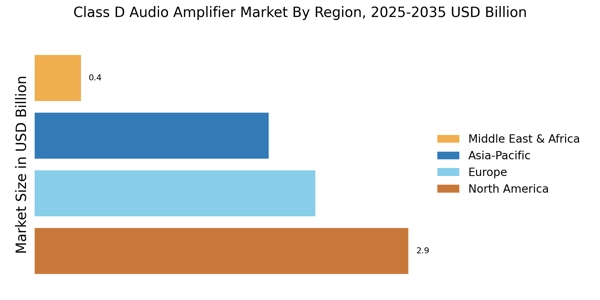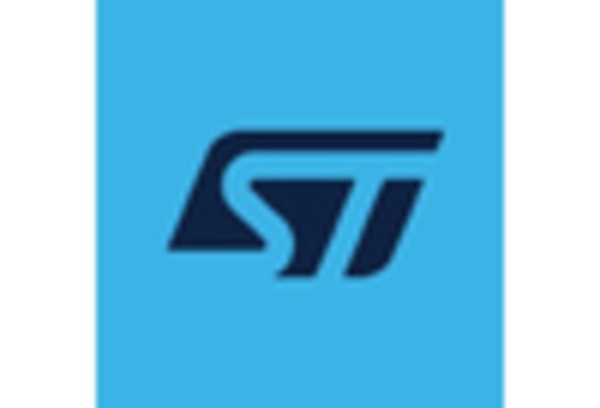Integration of Smart Features
The integration of smart features into audio devices is a notable driver for the Class D Audio Amplifier Market. As consumers increasingly seek connectivity and convenience, amplifiers that support wireless technologies such as Bluetooth and Wi-Fi are gaining traction. This trend is reflected in the growing popularity of smart speakers and home audio systems that utilize Class D amplifiers for their compact size and efficiency. Market data indicates that the segment for smart audio devices is expected to expand significantly, with a projected increase in sales of smart speakers by over 30% in the coming years. This integration not only enhances user experience but also positions Class D amplifiers as essential components in modern audio solutions.
Rising Demand for Portable Solutions
The Class D Audio Amplifier Market is witnessing a rising demand for portable audio solutions, driven by lifestyle changes and consumer preferences. As more individuals seek high-quality audio experiences on the go, manufacturers are increasingly designing compact and lightweight amplifiers that do not compromise on performance. This trend is particularly evident in the portable speaker segment, which has seen a substantial increase in sales, with estimates suggesting a growth rate of around 25% annually. The efficiency of Class D amplifiers makes them ideal for battery-powered devices, further fueling their adoption in portable applications. As the market continues to evolve, the demand for portable Class D amplifiers is likely to remain strong.
Sustainability and Energy Efficiency
Sustainability and energy efficiency are emerging as critical drivers for the Class D Audio Amplifier Market. As environmental concerns become more pronounced, consumers and manufacturers alike are prioritizing energy-efficient solutions. Class D amplifiers are inherently more efficient than traditional amplifiers, converting a higher percentage of input power into output power, which reduces energy waste. This efficiency not only lowers electricity costs for consumers but also aligns with global sustainability goals. Market data suggests that the demand for energy-efficient audio solutions is likely to increase, with a projected rise in sales of eco-friendly audio products. As sustainability becomes a key consideration, Class D amplifiers are well-positioned to meet these evolving consumer expectations.
Growing Interest in Home Audio Systems
The Class D Audio Amplifier Market is benefiting from a growing interest in home audio systems, as consumers invest in enhancing their home entertainment experiences. With the rise of streaming services and high-definition audio formats, there is an increasing demand for high-fidelity sound systems that can deliver exceptional audio quality. Class D amplifiers, known for their efficiency and compact design, are becoming a popular choice for home audio setups. Market analysis suggests that the home audio segment is expected to grow by approximately 15% over the next few years, driven by consumer preferences for immersive audio experiences. This trend indicates a robust opportunity for Class D amplifiers in the home audio market.
Technological Advancements in Amplification
The Class D Audio Amplifier Market is experiencing a surge in technological advancements that enhance audio performance and efficiency. Innovations in semiconductor technology, such as the development of high-speed MOSFETs, have led to amplifiers that deliver superior sound quality while minimizing power consumption. This is particularly relevant as the market is projected to grow at a compound annual growth rate of approximately 20% over the next five years. Furthermore, advancements in digital signal processing (DSP) are enabling more precise control over audio output, which is appealing to both consumers and manufacturers. As these technologies continue to evolve, they are likely to drive the demand for Class D amplifiers, making them a preferred choice in various audio applications.















Leave a Comment